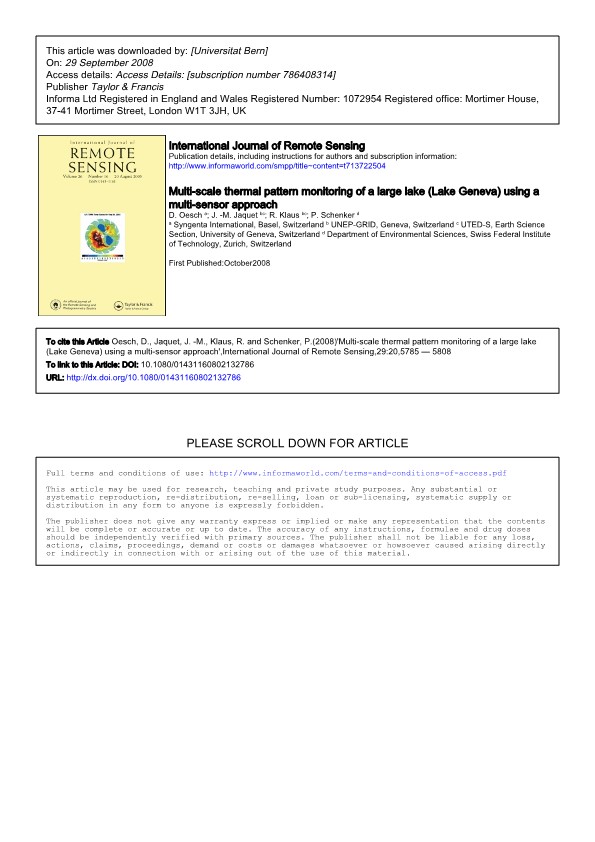Resource
Multi-scale thermal pattern monitoring of a large lake (Lake Geneva) using a multi-sensor approach
Description
he applicability of satellite imagery products from different sensors (AVHRR-derived multi-channel sea surface temperature (MCSST), MODIS sea surface temperature (SST) products 5-Min L2 Swath 1 km and Landsat TM band 6 thermal signature) for the comprehensive monitoring of temperature and its temporal patterns over a large lake is tested in this study. The coverage of cloud-free satellite data for Lake Geneva is reported throughout a year and, more specifically, during a 13 day period in summer 2003. In a second step, we demonstrate the feasibility of the AVHRR/MODIS imagery to discern day and night temperature patterns, by generating day and night climatologies and various spatial statistics over the 13 day period. The different day and night surface thermal patterns observed by satellite imagery could be linked to the thermal structure existing in deeper water using the concept of the diurnal decoupled layer. The forcing of the persistent patterns, two warm cores divided by a saddle-shaped cold anomaly, is explained by wind periodicity and insolation conditions. The patterns can be matched to features postulated by findings of different limnologists in the past. Other surface temperature related phenomena such as water upwelling and downwelling and the occurrence of plumes are related to meteorological and hydrological events. The lakewide average lake surface water temperature (LSWT) trends for day and night during the study period are roughly parallel. A sudden loss of stored heat can be explained by episodes of long fetch, synoptic wind (bise) that interrupted the predominant breeze regime.